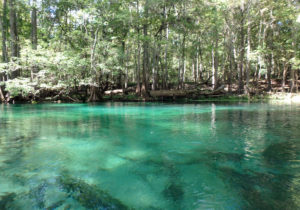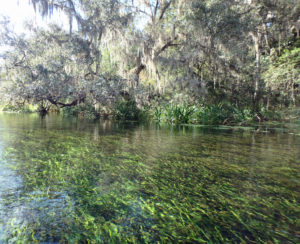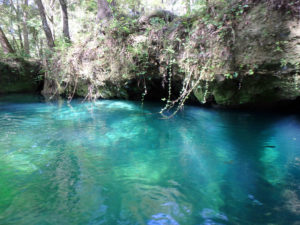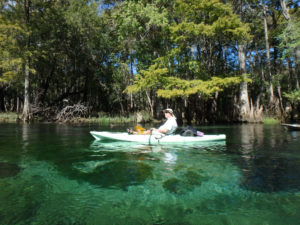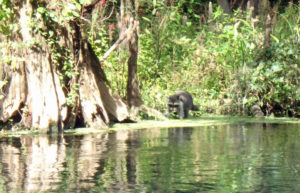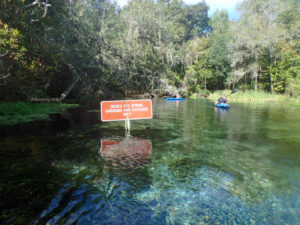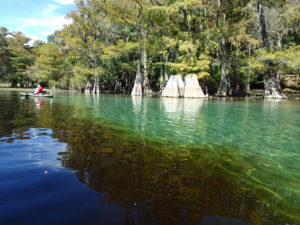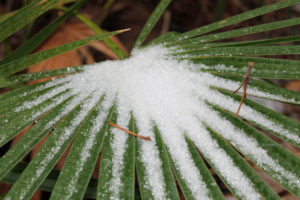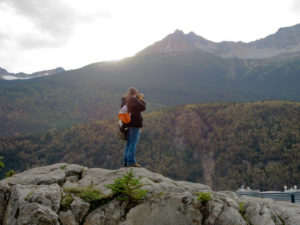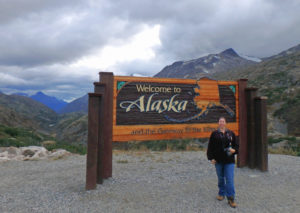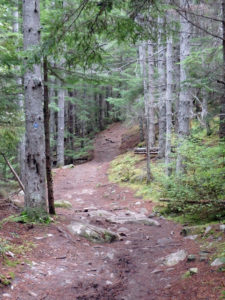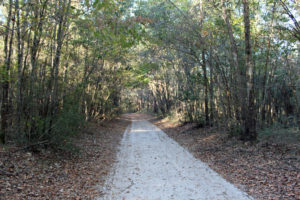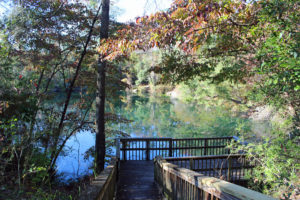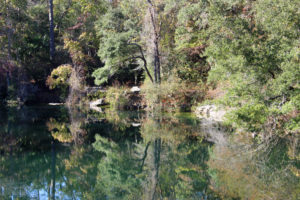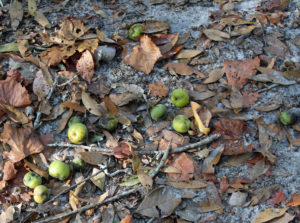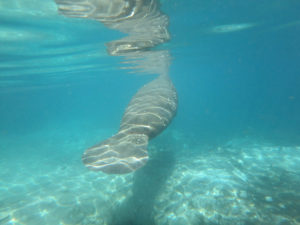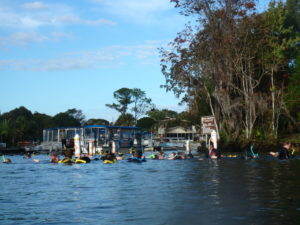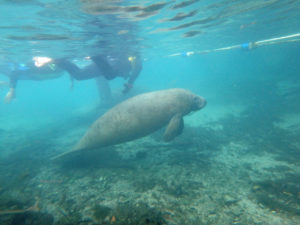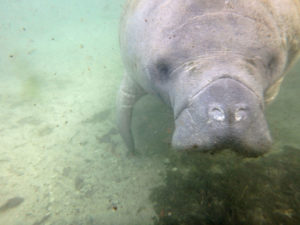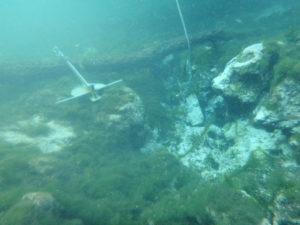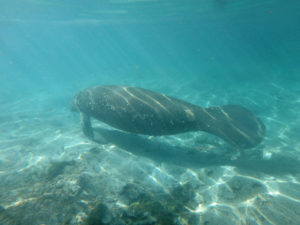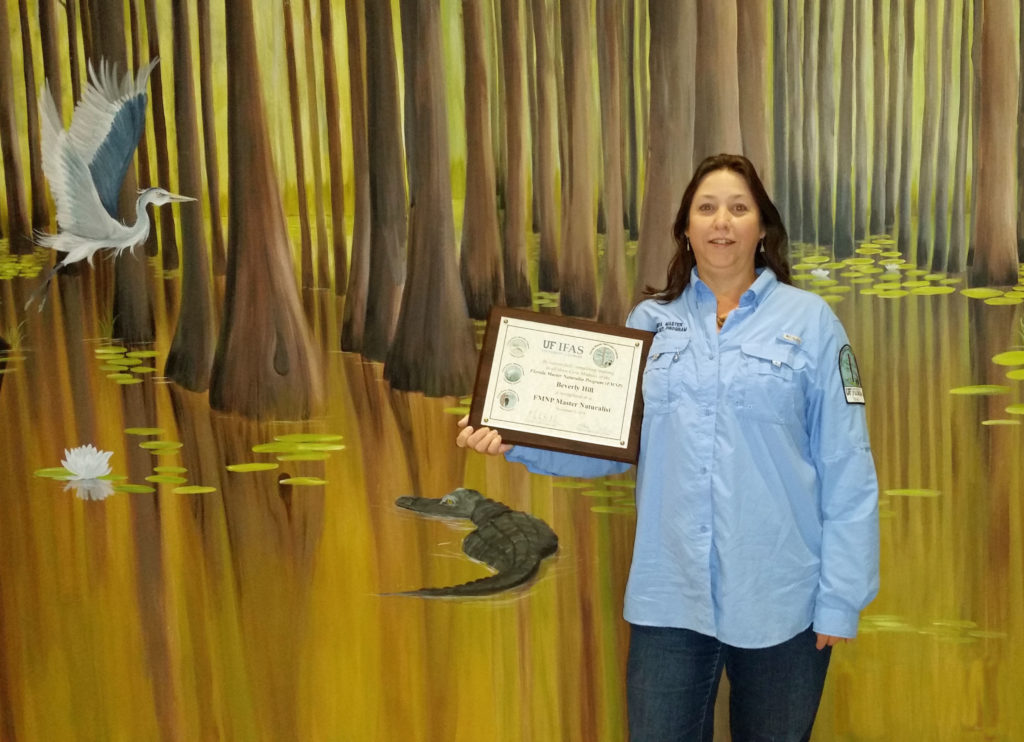The Ichetucknee River has always been on my list of rivers to explore. For years I had been jealous of tales of crystal clear waters and more wildlife than you could shake a stick at, so I was thrilled to get the opportunity to paddle on this pristine waterway last October during the 2015 Florida Paddler’s Rendezvous at the Suwannee River Campground in Mayo, FL.
Ichetucknee Springs State Park is almost literally in the middle of nowhere, with the closest town being some 5+ miles away in Fort White and the next largest town, Lake City, located nearly 23 miles away. Despite the distance, Ichetucknee Springs receives more visitors than it can sometimes handle and it has to turn people away once capacity for the park is reached.
Fortunately for our group, October is the off-season and the tubers had gone home for the summer and our convoy of paddlers had no problem dropping off kayaks near Blue Spring at the north end of the park before shuttling vehicles to our takeout on the lower Santa Fe River almost 12 miles away. The plan was to paddle 6 miles on the Ichetucknee before merging onto the Santa Fe River where we would paddle another 5 ½ miles to our takeout on Hwy 129.
Because of the distance we would be traveling that day and the restrictions within Ichetucknee Springs State Park, special care had to be made with our food and water provisions since disposable containers/wrappers are not allowed within the park, including glass or plastic bottles. For this trip I brought along my Camelbak and a drybag containing cookies and dehydrated fruits. I really don’t mind extra measures like these when it comes to protecting such a vital natural resource.
We finally got underway and were immediately met with the beauty that is Ichetucknee. The waters were clear and cold, allowing us to see all the way to the bottom of the river where a sea of grasses waved gently beneath us, beckoning us with their rich colors. A variety of bream, bass and other fish drifted casually in and out of the grasses, probably secure in the knowledge that fishing isn’t permitted here. Along the banks we would sometimes see White Ibis, Great Blue Heron and even a Barred Owl as it swooped across the river.
Turtles were everywhere, and more than once I counted as many as 30 on a log. I figure there weren’t more simply because the log wasn’t long enough. We never saw any alligators, and I’d been told that any over 4′ in length are trapped and relocated. That being said, this is Florida and you never know when one will find its way in, so it’s a good idea to be on the lookout just in case. Someone should probably mention that to the Raccoon I spied washing his paws at the water’s edge.
Along the way we took the time to gaze into the depths of Devil’s Eye Spring and later Coffee Spring, as well as several other springs along the length of the spring run. We drifted along the river for a couple of hours, passing several of the park’s tube launch platforms until we finally passed out of the park and the last takeout before entering the lower section of the Ichetucknee where houses and long boardwalks slowly loomed into view. There were no takeouts beyond this point, so we were committed to our takeout on Hwy 129.
Finally we reached the amazing confluence of the Ichetucknee and Santa Fe Rivers. I stopped to take several pictures of the brilliant clear water of the Ichetucknee merging with the tea-colored flow of the Santa Fe. It was such a stunning contrast. From here we downstream the remaining 5 ½ miles to our takeout. This last section of Santa Fe was mostly unremarkable with homes appearing regularly. Our biggest challenge was just keeping an eye out for any motor boats.
Before planning your trip, be sure to visit the Florida State Parks website to see when the south gates are open. Ichetucknee Springs State Park is located at 12087 SW Hwy 27, Fort White, FL.
[amazon template=iframe image1&asin=B01MFD6WMD]
[codepeople-post-map]

